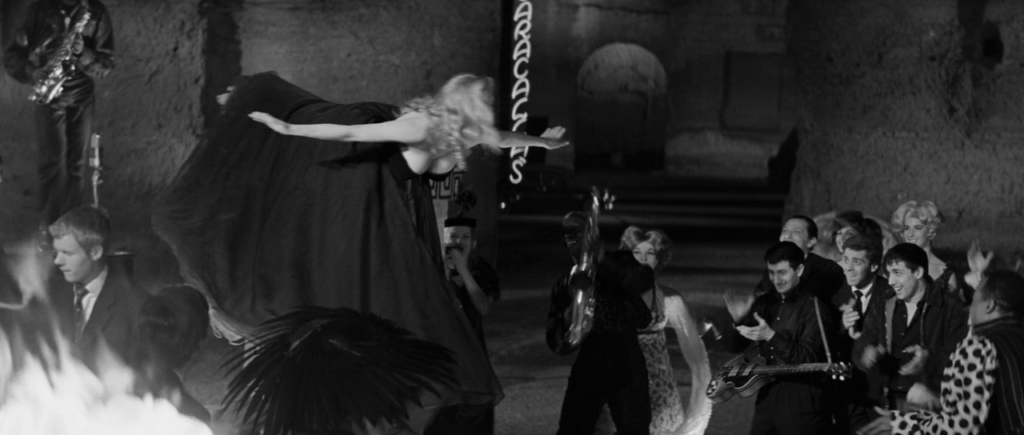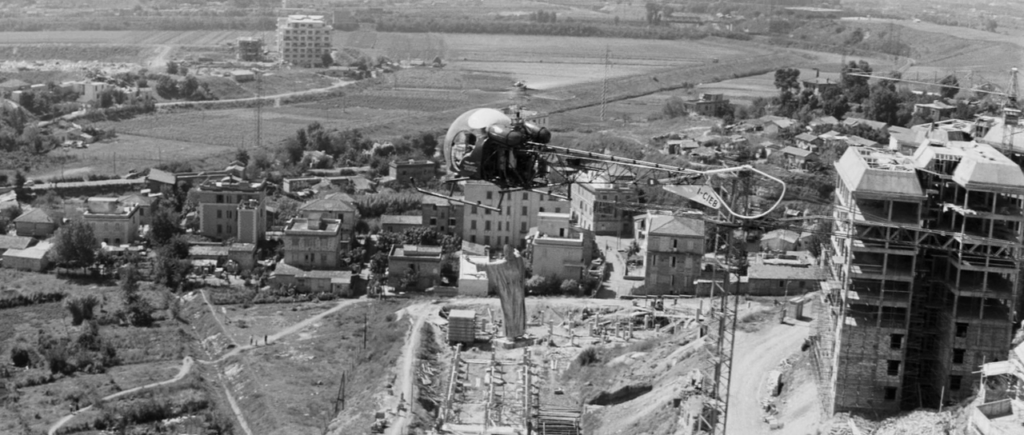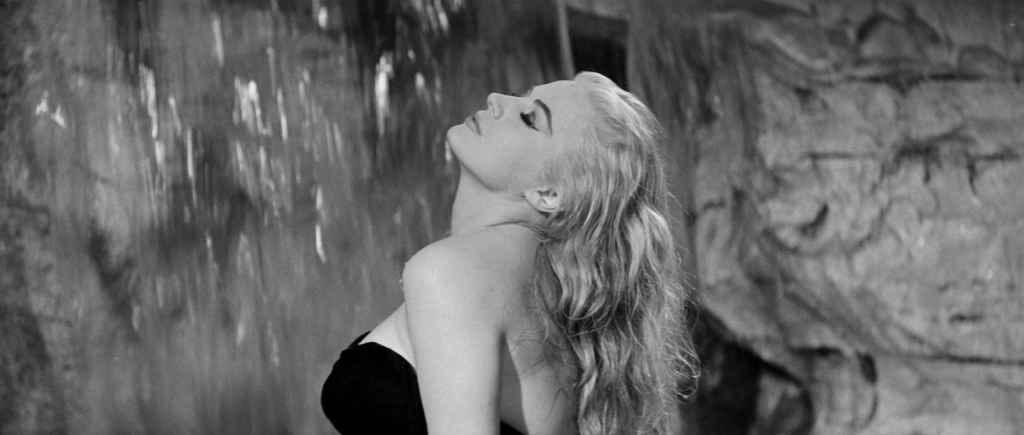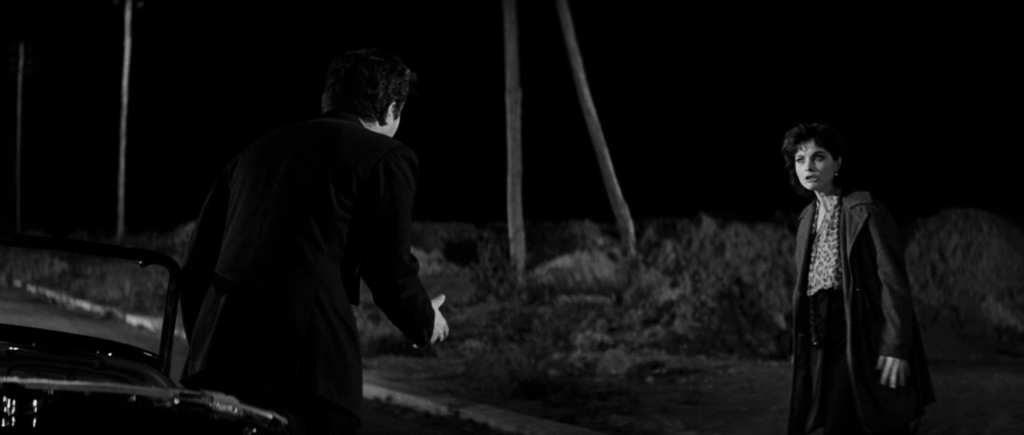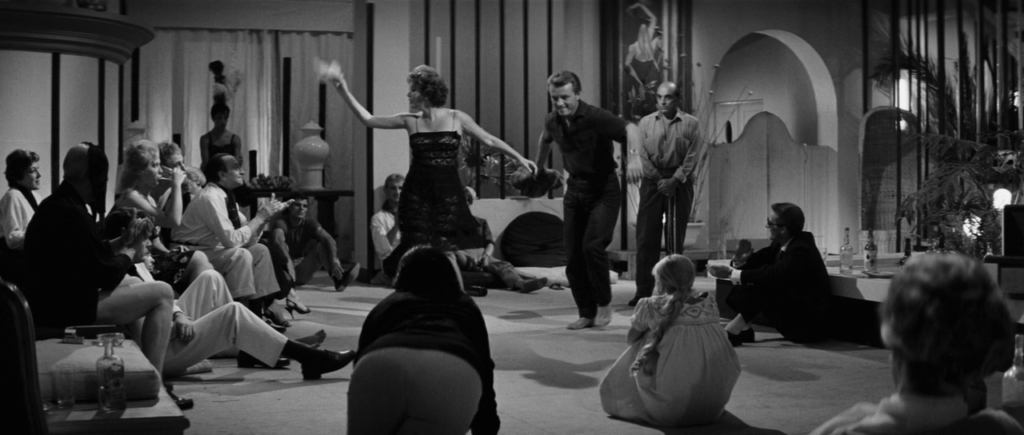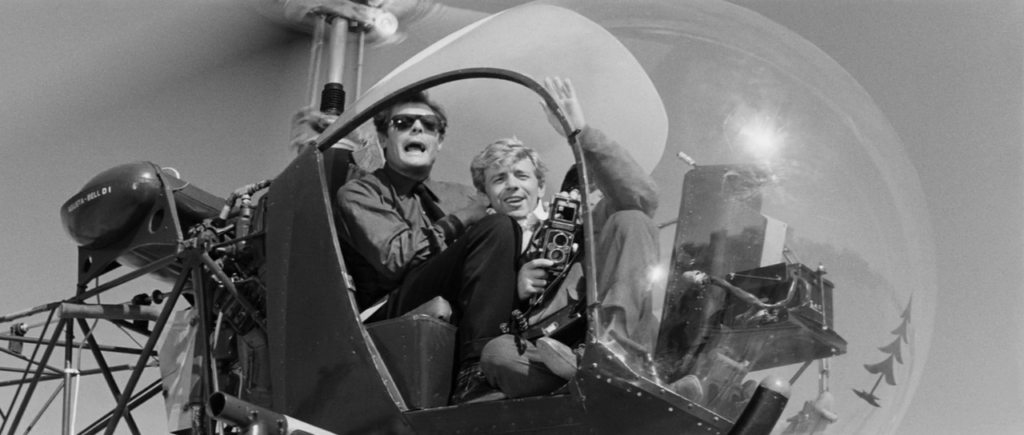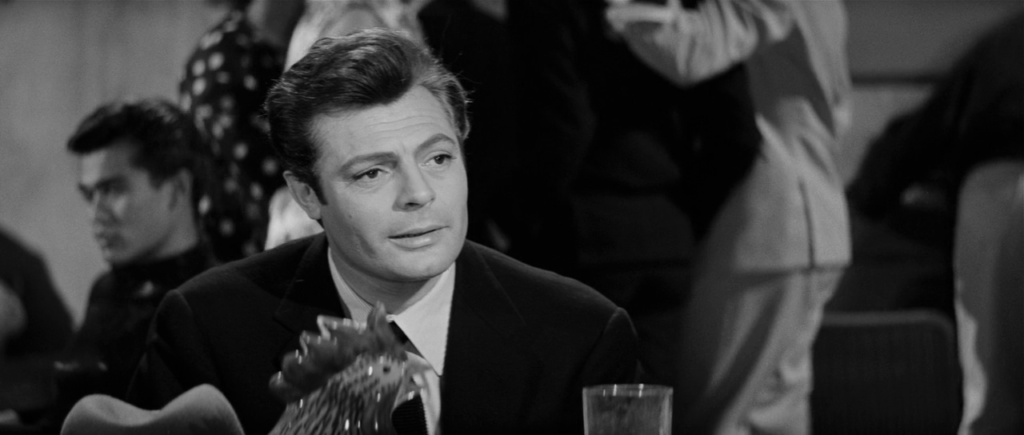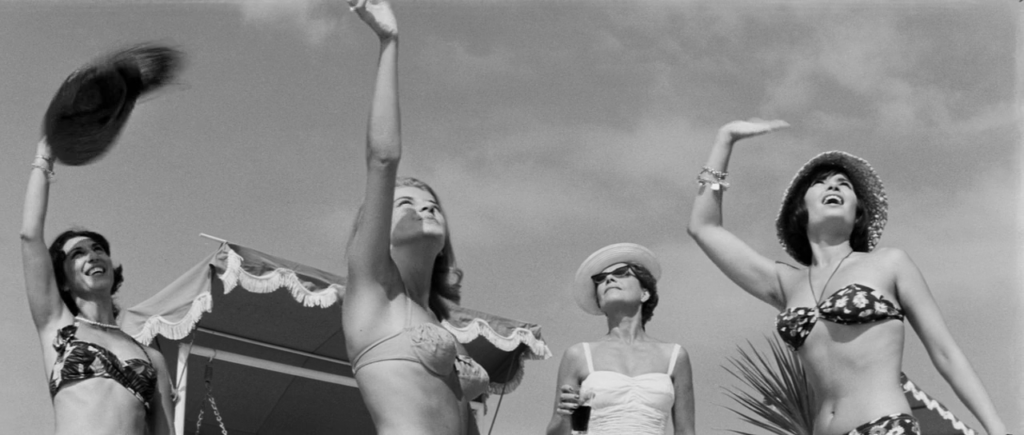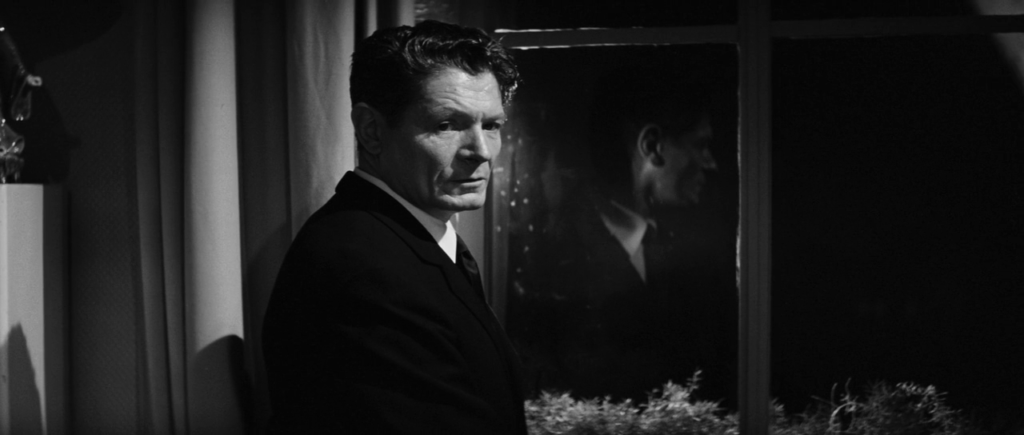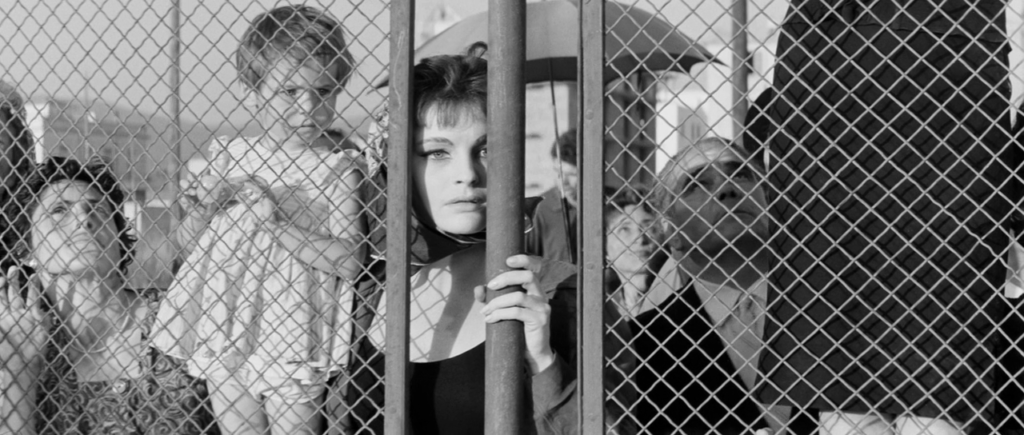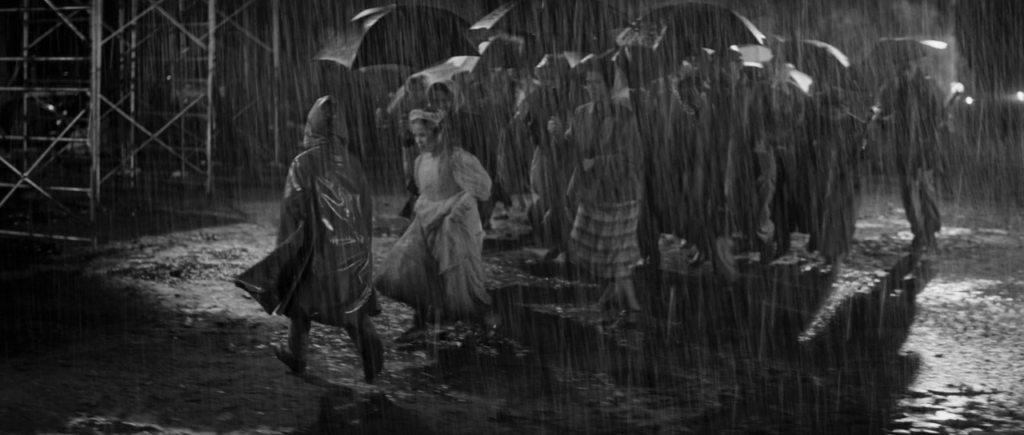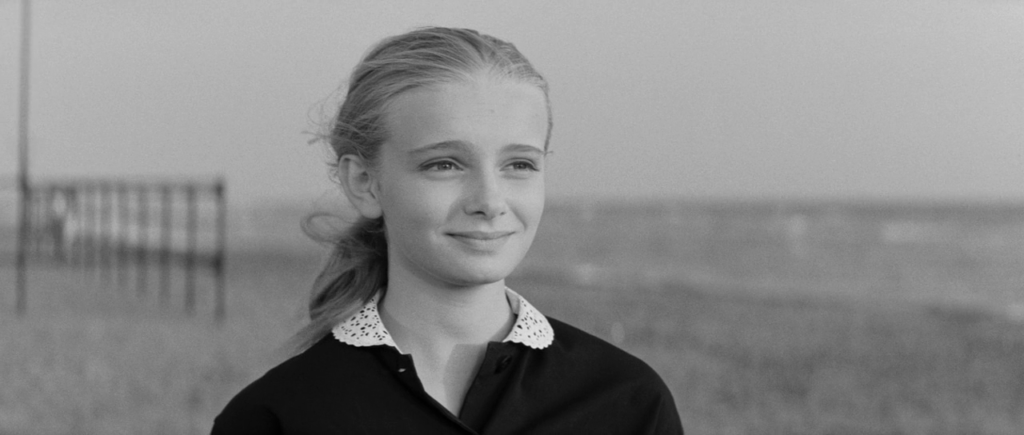Dolce Vita, La (1960)
“Only love gives me strength.”
|
Synopsis: |
|
Genres, Themes, Actors, and Directors:
Response to Peary’s Review: Peary describes “Fellini’s depiction of the sweet life [la dolce vita]” as one in which “nights are given over to decadence, dawn is a quiet time for reflection and, this being Italy, guilt — but not enough guilt to abandon the ugly yet intoxicating life-style.” He points out that the “film is filled with memorable characters (who move in and out of the story) and classic scenes: a statue of Christ hanging from a helicopter”: … “Anita Ekberg’s walk through a fountain”: … “Mastroianni’s argument with Furneaux in their car”: … “the night at the palace”: … “the striptease”: … “Mastroianni slapping and putting feathers on a dazed female partygoer during an orgy”: … “etc.” As the film which sparked the phrase “Papparazzi” — after the name of Marcello’s photographer-friend “Papparazzo” (Walter Santesso), who is hovering around the periphery at all times — this film is appropriately filled with frenzy, movement, and multiple jam-packed frames. Indeed, it’s so easy to get caught up in the relentless energy of the narrative that the film’s more sobering moments — especially those near the end — come as a quietly disturbing shock. Despite its technical brilliance and historical relevance as a turning point in Fellini’s career, this is not a film I can imagine watching very often; it’s far too heartbreaking for that. However, it remains must-see viewing at least once for all film fanatics. Notable Performances, Qualities, and Moments:
Must See? Categories
(Listed in 1001 Movies You Must See Before You Die) Links: |

